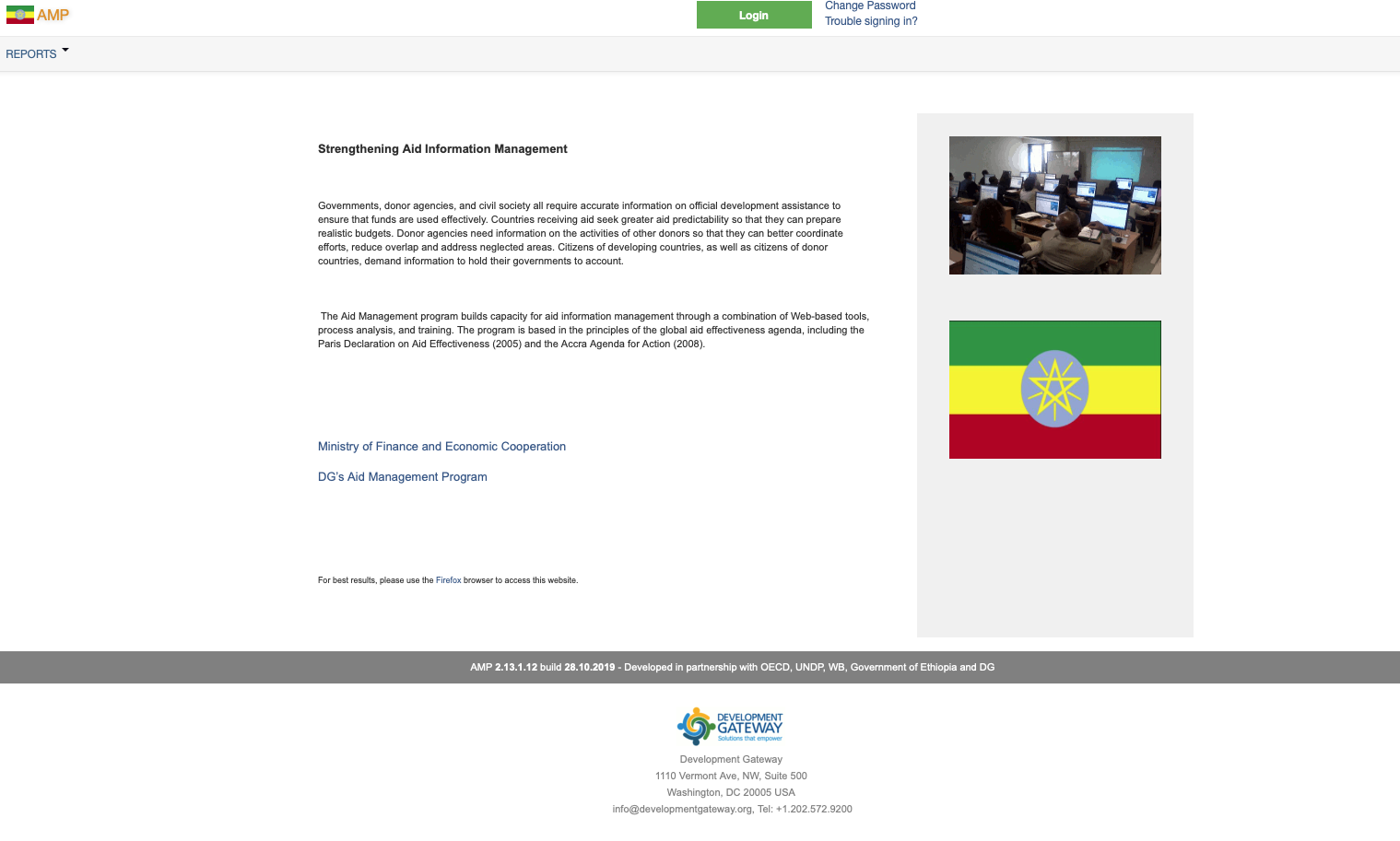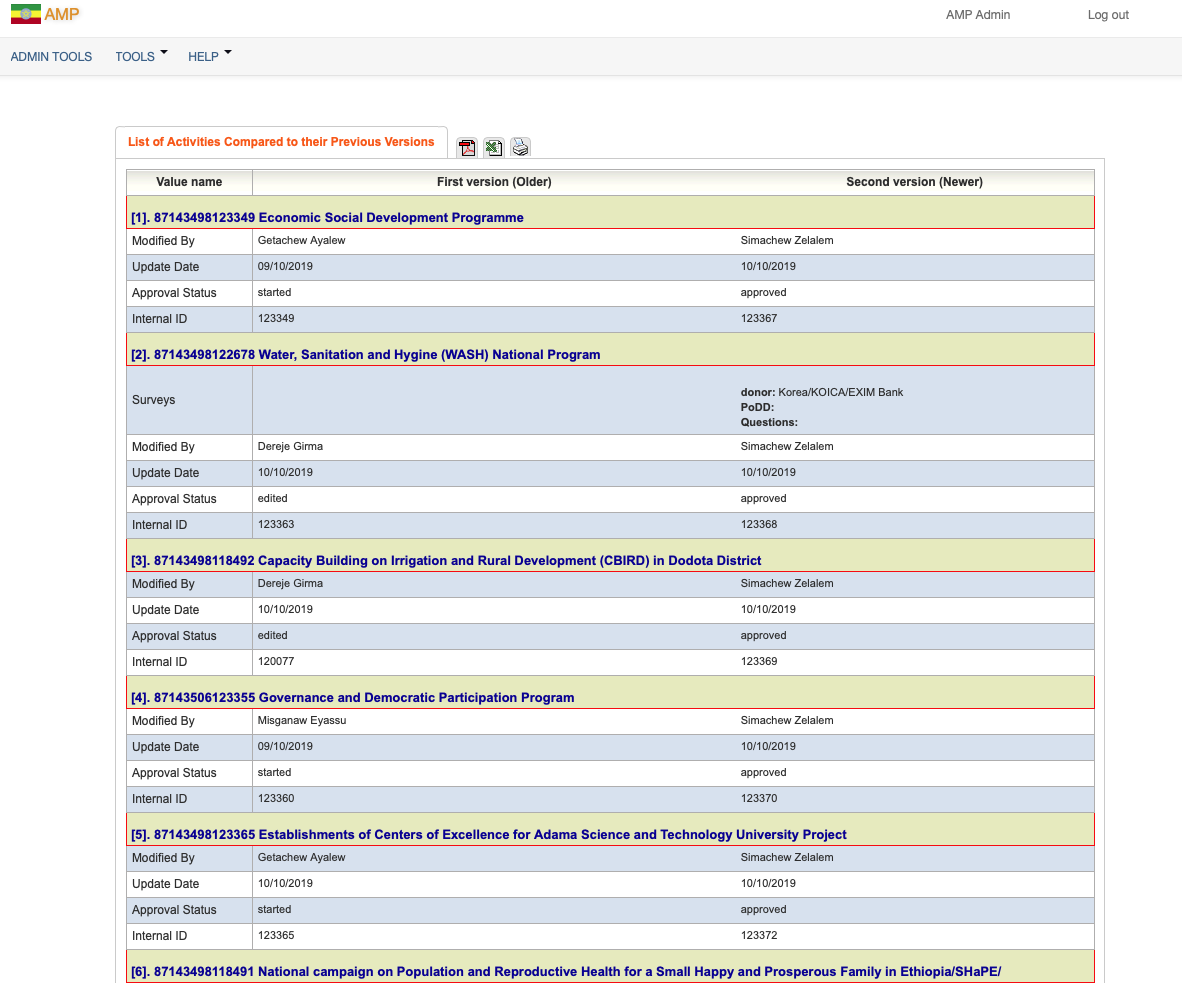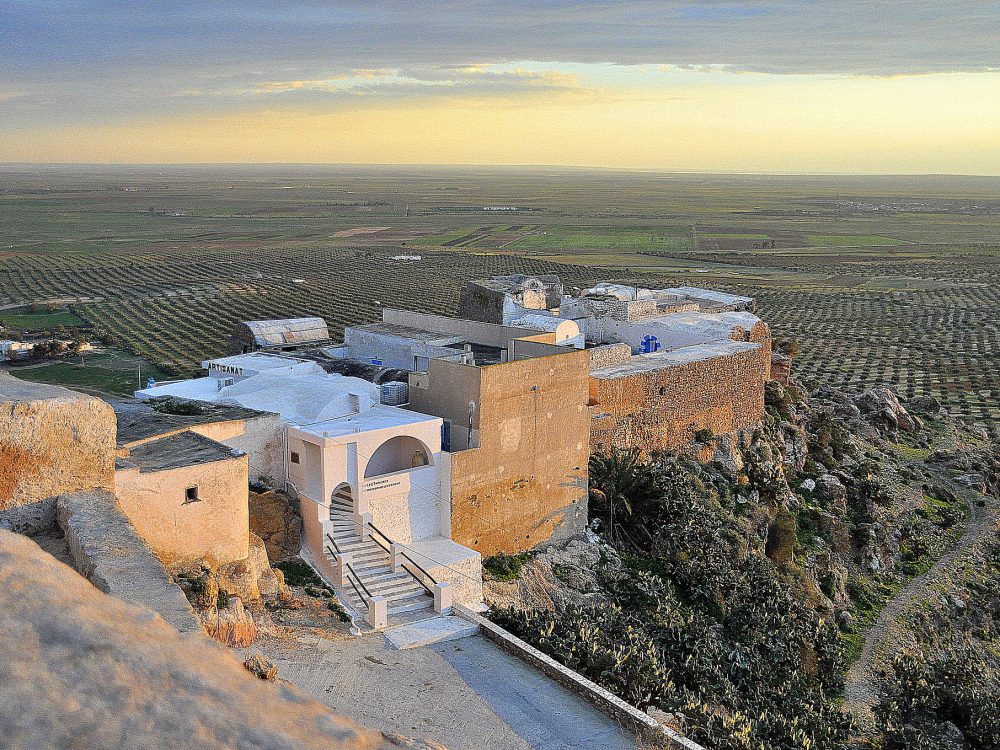Towards Full System Ownership: the Government of Ethiopia’s Journey to AMP Self-Reliance
DG’s History of Partnership with the Government of Ethiopia
In May 2005, the Government of Ethiopia (GoE) was the very first of DG’s country partners to implement the Aid Management Platform (AMP), in line with the recommendations of the 2005 Paris Declaration on aid coordination and harmonization. Even at the very beginning, the GoE played an essential role in providing many of the initial requirements for a tool that would put the government of Ethiopia “in the driver’s seat” when it comes to managing foreign assistance.
For the last 14 years we’ve been working directly with the Ministry of Finance (MoF), formerly the Ministry of Finance and Economic Cooperation (MoFEC), the system has been running without disruptions. Through effective government partnerships and a comprehensive system, AMP has helped achieve more effective data use year after year. DG has completed extensive capacity building and governance training; supported the team in maintaining the platform; and developed new features as different needs have arisen.

Figure 1: Home page of the GoE AMP
Moving to Full Country Ownership with the GoE
The model of DG team members working with MoFEC to provide comprehensive support is effective – and has worked well for many years.
However, while working through details for a new support contract in early 2017, the MoFEC technical and management teams expressed interest in maintaining and developing new features on the AMP on their own. One of our ultimate aims is to enable partners to assume and maintain full system ownership – so unsurprisingly, AMP team was ready and eager to work with MoF to make this possible.
Just like in 2005, we recognized this as another great opportunity for the GoE to be pioneers of independent country ownership. In line with our commitment to building local capacity, DG agreed to GoE’s training request and began to plan the training.
Last year, we opened up the AMP source code, strengthening knowledge sharing and capacity building.This step allowed the Ethiopia team to become familiar with the code quickly and easily. But to truly open the door to Ethiopia’s full ownership, we planned a comprehensive “full picture” AMP training. This training covered not only the technical aspects of the platform, but also the underlying business logic.
Our approach to knowledge transfer was interactive and cumulative. We started with simple tasks, and built on that knowledge to complete the most complex ones as the training continued.

Figure 2: DG’s Julian de Anquin (center) with the AMP Ethiopia trainees during an in-person workshop session
Starting from the beginning, we ran 3 in-country trainings. The first two sessions covered AMP’s underlying business logic and its technical architecture. We ran many hands-on labs that challenged the Ethiopia team to solve small technical issues while getting familiar with the code.
In the third training, we trained the MoF team on DG’s requirement writing process, focused specifically on AMP functionalities. The overall idea was to provide a hands on training with a real business need. Together with the MoF technical team, we worked to write requirements for 3 new AMP features, from start (identifying initial requirements) to finish (requirements grooming).
The main goal of this phase was to create robust, detailed, consistent, and clear requirements that later were used to develop a new AMP feature built entirely by the MoF team, with assistance from a DG trainer.
After the training missions were finished, MoF management chose one of the features (an Activity Comparison feature) to develop together. Since was the first time the team was going to develop a feature in AMP, DG developed approach documents to guide the team.
After discussion and clarifying the approach, the MoF team got started. One main challenge was to keep the code in sync with AMP main development GitHub branch, while keeping specific training pull requests (PRs) isolated. As AMP continues to evolve as we develop new features and fix bugs, this is critical. To take advantage of the tool’s evolution, it’s important to keep tasks updated. Another key aspect is support: DG can only provide support to the source code via the main AMP repository, so keeping it up-to-date ensures the country partner can get timely support. To solve this issue, MoF worked in a forked GitHub repository, making integration with the main AMP repository straightforward.
Currently, the new activity comparison feature is deployed on the MoF production server. It consists of the possibility to compare a list of projects with its previous version to be able to determine what has changed.

Figure 3: Part of the Activity Comparison feature, developed by the MoF team

Figure 4: View of the Activities List screen within the Activity Comparison feature
Lessons Learned
In training the MoF AMP team to assume responsibility of long-term maintenance and updating of the AMP software, we came away with a few big lessons that we look forward to carrying into future handovers and trainings. For example, it’s difficult to have every team member involved in every task. AMP is a big system. For AMP to be most efficient, teams can be broken up into smaller groups, each responsible for – and expert on – a specific AMP module.
Moving forward, we’re eager to continue working with partners – Ethiopia and many more – to support sustainable aid information management systems worldwide. In Ethiopia, we’re currently moving towards a second iteration of the training process, to support the MoFEC team to develop more complex AMP features.
For the development team at DG, this project was a compelling –and challenging! – opportunity to assist a country partner in using the AMP source code. In the near future, we expect more to help more countries with the task, so stay tuned for more lessons learned.
Share This Post
Related from our library

How useful is AI for development? Three things we learned from conversations with development experts
The development world is buzzing with excitement over the idea that new and emerging applications of artificial intelligence (AI) can supercharge economic growth, accelerate climate change mitigation, improve healthcare in rural areas, reduce inequalities, and more. But what does this look like in real life?

At a Glance | Tracking Climate Finance in Africa: Political and Technical Insights on Building Sustainable Digital Public Goods
In order to combat the effects of climate change, financing is needed to fund effective climate fighting strategies. Our white paper, “Tracking Climate Finance in Africa: Political and Technical Insights on Building Sustainable Digital Public Goods,” explores the importance of climate finance tracking, common barriers to establishing climate finance tracking systems, and five insights on developing climate finance tracking systems.

Du côté de l’Afrique Francophone et des Caraïbes
Development Gateway travaille aussi dans les pays francophones d'Afrique et des Caraïbes depuis 2007. Nous mettons à profit notre expertise technique et développons des outils, des processus et des analyses multilingues personnalisés pour soutenir les efforts de nos partenaires à obtenir de meilleurs résultats dans plusieurs secteurs, notamment l'assistance au développement, l'agriculture, les industries extractives et la santé. Ce bulletin d'information revient sur la présence de DG dans les pays francophones.